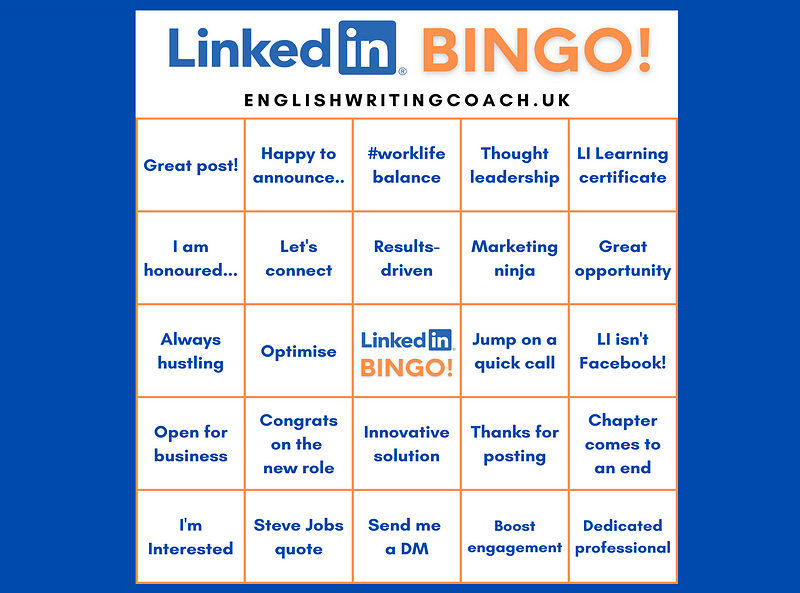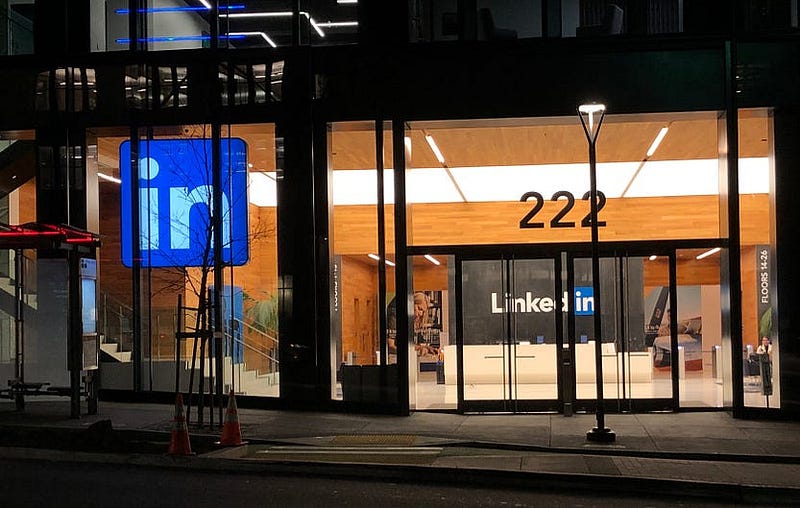Writing on LinkedIn is a Pyramid Scheme
The niceties and narcissism of a business network

Lead generation experts, growth hackers, and ‘battle-tested’ copywriters — this is the makeup of a 2023 LinkedIn feed.
The platform has grown to nearly 1 billion users and has successfully rebranded itself from an online CV database to a playground for entrepreneurs and content creators. With this comes great opportunity, but it also attracts sycophants and narcissists in their droves.
I’ve been writing on the platform since 2021. As a coach for multilingual writing pros, I post tips and thoughts about the English language, writing craft, and the state of the industry. Overall, it’s been a positive creative outlet, as well as a genuine source for clients. What they say really is true — your network is your net worth.
Yet, in recent months, I’ve become more frustrated with the swathes of ‘experts’ adding their voices to a sea of posts about content marketing. Most of those billion users aren’t active, and very few actually post and comment. LinkedIn is full of lurkers, too scared to let their bosses see the meme they liked. So why are all of these creative minnows so keen to reach them?
Why people write on LinkedIn
Unlike other social platforms, LinkedIn pays content creators 0. It doesn’t matter how many followers you acquire or how many eyeballs you drive to the platform, LinkedIn will pay you 0. In fact, creators often pay for LinkedIn premium accounts in order to access more powerful search functions and understand who is viewing their profile.
In 2022, the social network gained $13.8 billion in revenue, with the majority coming from premium accounts and B2B data sales, rather than ad revenue. For Microsoft (the owner of LinkedIn), advertising is a mere side hustle.
Searchable data is what makes LinkedIn an attractive place for freelancers and founders, as well as big businesses. Imagine you are a freelance web designer who helps Yoga teachers with their online presence. Or maybe you’re a communication coach who works with Japanese executives living in the US. You can find your ideal clients through search, publish useful content just for them, and start conversations by direct message.
Building your network in this way can lead to corporate clients, long-term relationships, and high-ticket sales. All this instead of a few measly dollars of ad revenue.
Of course, you have to learn a lot about marketing and sales, and all of this does not happen over night. Essentially, LinkedIn is a slower game, with a bigger payoff.
What top creators write about
LinkedIn is a business platform, so it’s not surprising that remote work, career growth, technology, and diversity comprise the staple topics of many of the articles, posts and videos shared.
But it’s not all leadership gurus. Whereas the route to LinkedIn gold used to be about selling non-fiction books and booking speaking engagements (a la Simon Sinek or Adam Grant) things look very different in 2023. Entrepreneurship, marketing and personal branding have become more than trending topics — they have stolen the show. Just check your LinkedIn feed, and you’ll see what I mean.
With an army of new creators looking for clients and customers, creators tend to build big followings by telling others how to grow their LinkedIn business. Being a LinkedIn coach would have seemed like a joke in 2019, but hundreds (or even thousands) are making serious money doing so.
These experts sell the dream of becoming a successful entrepreneur, just like them. They sell courses or run paid communities based on copywriting, social media growth, side hustles, and marketing.
For me, most of these ‘top voices’ blend into one. It all seems so insular, and all those likes and shares get kicked up the chain. In fact, it’s not dissimilar to how a pyramid scheme operates:
Step 1: sell a course on how to make money on LinkedIn
Step 2: the original clients learn how to do the same and find other ambitious digital entrepreneurs
Step 3: after several levels of resale, the buck stops with those who want to target clients in other industries, who are less driven by the ‘earn a six-figure income in 30 days’ type headlines.
How the algorithm fuels the fire
First of all, personal networks are much smaller than audiences on other social sites. Most LinkedIn accounts have an audience comprising mostly those they have ‘connected’ with (allowing reciprocal DMs). The maximum number of connections permitted is 30,000, so with a few followers added in, accounts can gain a huge amount of influence on LinkedIn.
Post reach is determined by how many in your network like, share or comment on your posts (similar to other social sites). But here’s the difference, the comments of your connections show up in your feed too.
This means the ultimate goal of smaller accounts is to get bigger creators to comment on their posts. If a big account interacts with your post, you could gain hundreds of followers or connect with other industry players who follow them. So, whatever they post, the top accounts are showered with love. “Great post :)”, “Totally agree”, “You nailed it!!!”.
Once a creator reaches a higher number of followers, they can post insipid quotes and obvious advice and still receive a torrent of engagement. It causes the top 1% to form strong bonds and collaborate on content in order to cement their position as experts and remain at the top. Newer writers tend to parrot the same half-baked marketing advice to try and appear as successful as the ‘Top Voices’ without realising that THEY are the product. Of course, all they have to do to get to the next level is buy a course. Simple.
I say this not to judge or complain. I’m involved in it all in some way. Although I never claim I’ll double clients’ income or make them a star on social media, I do sell coaching courses on writing effectively. Some days, I’m grateful for the positivity and interaction my writing receives on LinkedIn; others, I write sarcastic slideshows about the ridiculous promises, fake gurus and bad advice I see daily on the platform. My question is why are so few others recognising that creators are trapped in a bondage scheme, with all the wealth travelling up to the top 1%?

Is the creator economy a pyramid scheme?
What’s happening with writers on LinkedIn can be seen on other creative platforms too. On YouTube, Patreon, Podcasts, Substack and more, a low percentage of creators are making it work. Those who do best often tell others how to grow and make money. Let’s be honest, it’s a never-ending source of Medium articles too.
However, Medium seems more equitable. If you build a relationship by reading and commenting on others’ posts, they’ll probably return the favour. Our writing does not succeed or fail on whether we paid a designer to make it look beautiful. And many of the most-followed writers on the platform were early adopters, brought an audience from elsewhere, or have logged thousands of hours curating a publication.
As ever, the life of a writer is never easy, and the quandary of how to make money doing it remains. Despite what I’ve said, I do recommend writing on LinkedIn. It is a place where you can build genuine connections and read insightful pieces.
Just remember, if you see a headline like “How I got 34 clients to pay me over $2,000 each last month” or “You are positioning your personal brand TERRIBLY. Do this instead!!!”, beware. Don’t fall into the trap of the pyramid scheme; make your own way as best you can.
Philip Charter is a writing coach from the UK who works with multilingual professionals. He is also the author of three books of short fiction. Feel free to connect on LinkedIn.






